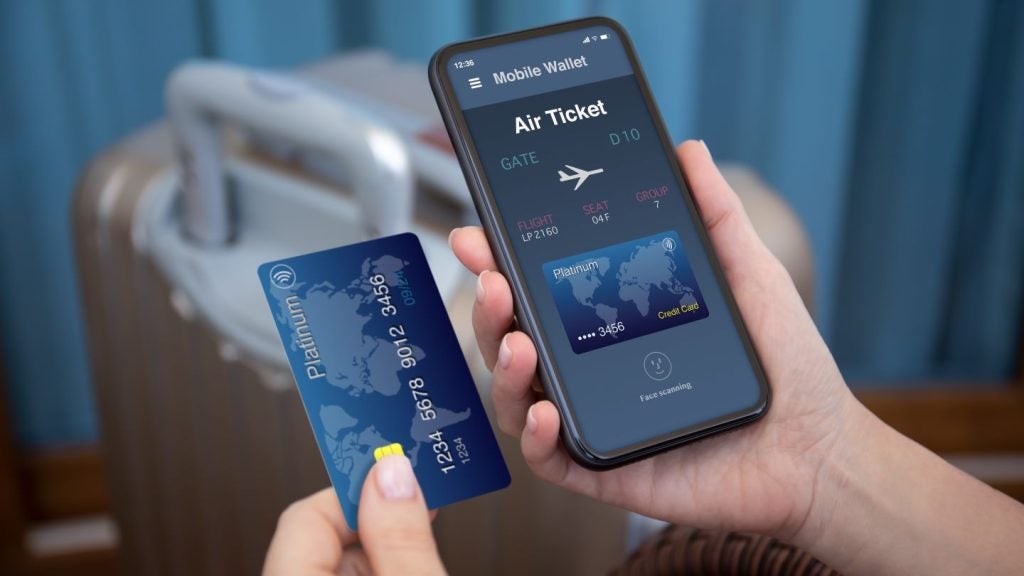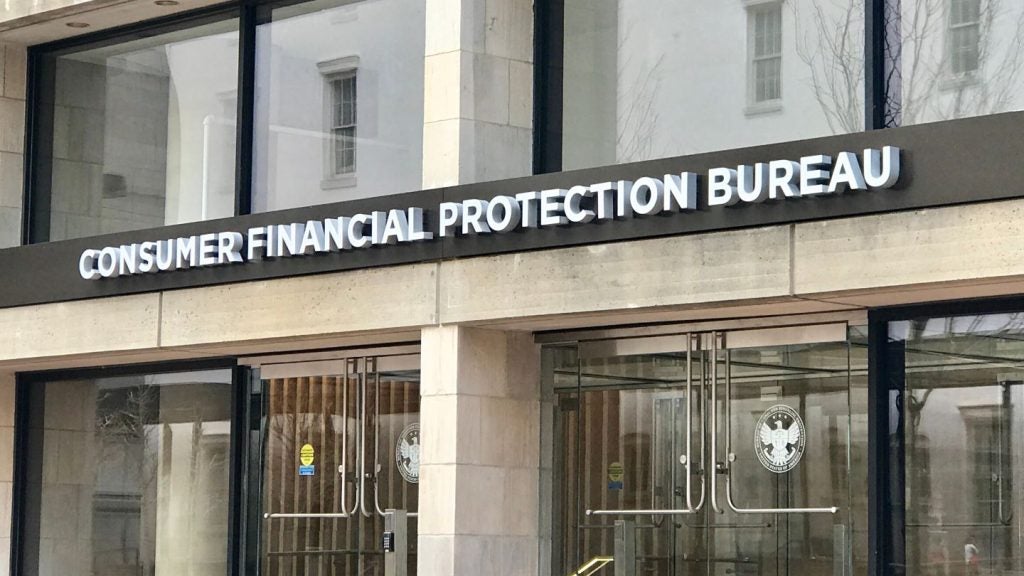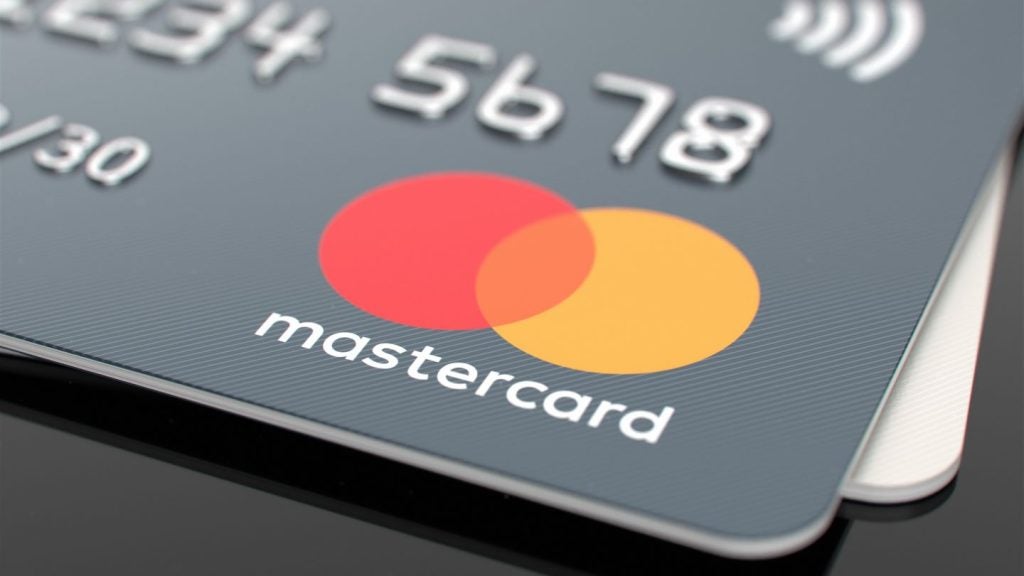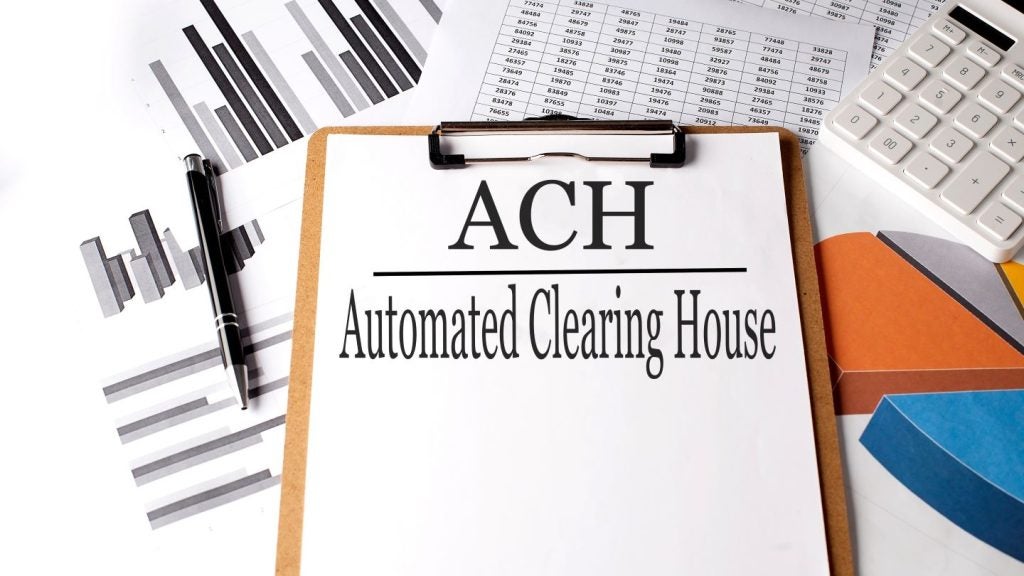
US Fintechs Revolutionize B2C Digital Payments: Faster, Better
A number of US fintechs are helping businesses to reduce their payments costs, streamline the customer experience and speed up disbursements by linking them to customer-preferred payment methods, writes Robin Arnfield
Non-bank money-transfer companies such as Checkbook, Ingo Money, Dwolla, Fiserv, Stripe and TabaPay act as aggregators, providing access to multiple payment methods such as the Visa Direct and Mastercard Send push-to-debit card services, bank-tobank P2P transfer scheme Zelle, and The Clearing House’s RTP real-time payments platform, as well as to bank-based payment methods such as ACH and wire transfers.
How well do you really know your competitors?
Access the most comprehensive Company Profiles on the market, powered by GlobalData. Save hours of research. Gain competitive edge.

Thank you!
Your download email will arrive shortly
Not ready to buy yet? Download a free sample
We are confident about the unique quality of our Company Profiles. However, we want you to make the most beneficial decision for your business, so we offer a free sample that you can download by submitting the below form
By GlobalDataFor example, Ingo Money boasts links to 28 different payment methods, and provides easy integration to its payments aggregation platform for corporations needing to generate B2B or B2C payments. It also offers an outsourced solution on a payments-as-aservice model. Another fintech, Checkbook, creates online cheques with inbuilt in payingin options.
But these fintechs go beyond replacing expensive paper cheques: they also incorporate sophisticated security to verify recipients’ identity credentials such as email addresses and mobile phone numbers, bank account verification, instant fund transfers, instant digital cheque cashing into bank accounts and prepaid cards, remittance document delivery, transaction tracking and notification, and integration with corporate accounting software.
Modernisation
The push to modernise B2C payments is coming from both consumers and businesses. US consumers have become accustomed to faster payments as a result of using P2P transfer services such as PayPal, Zelle and Venmo, which has raised their expectations for receiving B2C payments such as insurance claim refunds with immediate availability.
An August 2018 survey of 1,000 US consumers by Forrester Research on behalf of Ingo Money found that 62% of respondents saw it as very important to receive their funds immediately, and 63% preferred direct deposit or same-day direct deposit into their bank accounts for payments.
On the business side, with interest rates at record lows, preserving cashflow by making money on a company’s float is no longer justified. Instead, the cost of processing and making cheque payments is a major revenue loss for organisations such as insurance companies, investment firms, and government agencies.
Aite Group estimates that in 2018, B2C disbursements in the US represented a total market size of 3.5 billion payments for a total value of $10.7trn.
While there has been a steady move towards cheque replacement in the US, this has not been happening quickly, and businesses continue to send out a large number of cheques. According to the 2019 Federal Reserve Payments Study, between 2015 and 2018, total US cheque payments declined by 7.2% per year by number and 4% per year by value.
Checkbook
San Mateo, California-based Checkbook was founded in 2015 by PJ Gupta, a serial fintech entrepreneur and former Visa North America chief network architect. The company aims to provide businesses with a simple way to make electronic payments.
Businesses using Checkbook’s technology literally send a digital cheque to payees, which they can convert into an ACH transfer into their bank account, or print out and scan into a mobile banking app. Checkbook also enables businesses to send funds to payees in real time via Mastercard Send and Visa Direct, or to virtual prepaid card accounts that payees can use for online purchases from within Apple Pay or Google Pay.
Checkbook charges a flat fee of $1 per transfer, instead of a percentage of the total amount, and all payers need is the payee’s email address or mobile phone number.
“Unlike two-sided services such as PayPal and Zelle, which require both the sender and recipient to sign up for their service, people receiving electronic cheques from Checkbook don’t have to download an app or register with us,” says Gupta.
“They just need to click on the link in the email or text message they are sent, which takes them to a page on our server where they are presented with several payment options.”
If the payee selects a Visa Direct or Mastercard Send transfer to their debit card, the money arrives virtually instantly. But, if they select an ACH transfer, funds are pushed to their bank account within three to four business days. Payers can attach a PDF to their Checkbook payment to provide remittance information.
Checkbook uses a RESTful (Representational state transfer) API, which provides interoperability between different computer systems, to enable its customers to track payments, send cheque batches, and onboard customers from their own website or platform. Its technology integrates with accounting packages such as Intuit QuickBooks and Accounting Seed, as well as with OSCommerce and WooCommerce, the e-commerce plug-in for WordPress.
Wedded to paper
Gupta founded Checkbook because he found he was still writing paper cheques, even though he had moved to online bill payments. His vision was that Checkbook would address the issue of paper business cheques.
According to Gupta, while consumers have increasingly been using digital payments schemes, US businesses are still wedded to paper cheques. “In the US, the only alternative to cheques for businesses are ACH and wire transfers,” he says. “But wire transfers are expensive, and the problem with ACH transfers is that you have to enroll
payees’ banking details before you can pay them. For a one-time payment such as an insurance refund, this is a hassle, especially if you are sending out a large number of payments.”
There is a great need for real-time B2C and B2B payments in the US. “The Clearing House offers real-time payments via RTP and is seeing growth in volumes,” Gupta says. “But the Federal Reserve’s FedNow real-time payment system likely won’t be available until at least 2023, and it will then take a while for banks to be enrolled in FedNow. That’s too long to wait.”
Instant pay option
One option, meanwhile, is to use Visa Direct and Mastercard Send for instant payments. Checkbook has partnerships with various sides of Visa’s businesses. “Our Instant Pay option leverages Visa Direct, and our Virtual Card option leverages Visa’s FinTech Fast Track Programme,” Gupta says. “We are a member of the Visa Preferred Partner Program, and our real-time payment solution was deemed one of the best by Visa after a rigorous vetting process.”
Checkbook has rigorous security features in place to ensure that it detects any unusual activity, such as sign-ins from a different location or unusually large sums being sent or received, and prevents any fraud from going through its system. “Also, all Checkbook recipients have to verify their phone number and email address,” Gupta says.
If a payee chooses Checkbook’s ACH deposit option, they are sent a verification code to their mobile phone and a link to bank account aggregation services Plaid or Yodlee. “Instead of asking them to manually enter their banking details, we verify payees’ bank
accounts by getting them to log into their bank account via Plaid or Yodlee,” says Gupta.
“We pull their account number via Plaid and push the money to them via the ACH network. As some people don’t want to use our bank login process via Plaid, we give them the choice of using Visa Direct or Mastercard Send.”
Insurance claim refunds
One of the biggest verticals for Checkbook is insurance claim refunds. Aite Group’s Business-to-Consumer Disbursements in the US: The P&C Insurer Opportunity report estimates that US property and casualty insurers could save between $22m and $43m by moving from cheques to electronic payment methods for claim disbursements.
Checkbook’s clients include ERP software supplier Cooper Software, Uber and Whirlpool. It also recently conducted pilots with a top 10 US insurer and a top four US bank, and is at the onboarding stage with the bank, according to Gupta.
Enabling government agencies to send benefit payments or salaries electronically is an important market for Checkbook, which has conducted pilots with the Californian cities of Fremont and Berkeley.
“We’re in discussions with the State of California about using Checkbook to pay healthcare workers who get paid hourly,” says Gupta. “Right now, these workers are sent paper cheques, which is very inefficient. We’re also talking to a large federal US government agency that deals with businesses, about using Checkbook for Covid-19 loan disbursements.”
Opportunities in Canada
Checkbook processes single-digit-millions of transactions worth single-digit-billions of dollars, according to Gupta. The company only operates in the US, but is looking to launch in Canada by the end of 2020.
“We see huge opportunities in Canada,” says Gupta. “The number one question we’re asked is: ‘Are you live in Canada?’ We’ve also been receiving enquiries from countries where a lot of business cheques are still written, such as the UK, France and the Philippines.”
According to Payments Canada’s Canadian Payments Methods and Trends Report, Canadian cheque and paper transaction volumes declined by 9% in 2018 to represent 15% of total remote payment volumes, compared to 25% of total volumes in 2013. Cheque and paper transaction values decreased by 4% in 2018 to represent 43% of total remote payment transaction values, compared to 51% in 2013. But despite the decline in Canadian cheque and paper item volume, the total value of these transactions remains high.
The Globe & Mail reports that 16% of Canadians who received federal emergency benefits such as the Canada Emergency Response Benefit in recent months opted to do so by cheque rather than direct deposit, according to Public Services and Procurement Canada. “A big part of the problem is a lack of trust in government, including the Canada Revenue Agency which administers the CERB program,” the Canadian newspaper said.
Ingo Money
Ingo Money sees itself as an instant money company, according to its CEO Drew Edwards. Through its gateway, Ingo Money offers connectivity through a single API integration to 28 different payments endpoints including Visa Direct, PayPal, Amazon, Moneygram and prepaid cards from companies such as GreenDot and NetSpend.
“We don’t care what payment method our clients want to offer their customers,’ says Edwards. “We’re trying to create ubiquity in terms of choices.”
Alpharetta, Georgia-based Ingo Money processes around $450m gross dollar volume (GDV) in transactions a month, or $5bn a year. Around $100m of GDV a month is insurance claim payouts, according to Edwards.
For end customers, Ingo Money offers a range of payment options including direct deposit to prepaid cards, paper cheques, ACH transfers, and payments via The Clearing House’s RTP real-time transfer system.
“Around 9% of the time, our end customers chose to receive cheques, and 20% of the time they chose ACH payments,” Edwards says.
For its enterprise clients, Ingo Money offers two different solutions: APIs that companies integrate into their own payments platforms and then notify Ingo Money when they are ready to make a payment, and a software-as-a-service platform for which Ingo Money handles everything, including branded messaging to end clients, monitoring transaction status, user screens and payments.
An important use case for Ingo Money is B2B lenders such as Kabbage and OnDeck Capital, and B2C lenders such as Goldman Sachs’s Marcus, Curo and One Main Financial, a joint venture between Citibank and AIG.
“These lenders offer debt consolidation loans or other types of loan products to their customers,” says Edwards. “Once they approve the loan, they present the borrower with a choice of how to receive the money using our gateway. We then push the money to the borrower. “
For Marcus, we developed a bill payment service for its debt consolidation product, in which Marcus pays off the borrower’s original loans through us instead of sending the money to the consumer.”
Top banks and insurers
Two other important markets for Ingo Money are providing claim disbursements for property and casualty (P&C) insurers and payments for corporate clients of large US treasury banks. “
We have four of the top 15 US banks and two of the top five US P&C insurance carriers as clients on our platform,” says Edwards. “We see ourselves as a technology partner for banks.” Banks using Ingo Money’s disbursement technology include First Century Bank, KeyBank and Republic Bank.
“KeyBank has been live with us for over a year, and is the treasury bank behind one of the P&C carriers using our platform,” says Edwards.
Under a partnership announced in 2018, KeyBank offers the Ingo Push service, which uses the Visa Direct and Mastercard Send rails, for real-time disbursements as part of its treasury offerings for clients. A P&C insurer processing a claim will send a request to Ingo Money’s server to make a payout to a customer, including all the information needed to make a payment.
“We then send the customer an email or text branded with the insurer’s name and asking them how they want to be paid,” says Edwards. “Our clients decide which payment methods to make available to their end customers. We validate the identity credentials that the claimant has provided to the insurer in real time using a mixture of proprietary and market tools. Then we connect back to the insurer so that its various departments – claims, customer care, treasury, finance and so on – can see in real time what is happening with that claim.”
Depending on the amount of the payment and the method used, Ingo Money uses different verification processes.
“If an insurer sends a $50 refund to a debit card, we just do the standard card verification that would take place in a retail store,” Edwards says. “But for a large amount going to a bank account, we obtain proprietary information from the insurer which we match with information we collect from the recipient to make sure they are genuine. For example, we might ask them what city their car accident occurred in.”
Although Ingo Money does not provide payments services to the gig economy, it works with a Silicon Valley start-up called Kickfin which provides electronic tip payments to restaurant staff.
“US restaurant owners are legally required to pass on tips to their staff,” says Edwards. “Now that most people pay for restaurant meals with credit cards, restaurants don’t want to hold cash just for paying tips. So Kickfin uses our engine to enable its restaurant clients to pay tips to their staff by whatever payment method the employees want.”
Instant cheque cashing
Other business areas for Ingo Money include merchant processing and digital cheque deposit. Ingo Money provides same-day merchant settlement for processors such as Paysafe and Nuvei in the US. Paysafe uses an Ingo Money API to provide its merchants with choices for how they get paid.
Catering for unbanked and underbanked consumers, Ingo Money provides instant digital chequecashing solutions for apps from around 300 companies in the US, including PayPal, Amazon, Green Dot, NetSpend and ADP.
“Our solution enables consumers who receive a cheque such as their salary or a government benefit, to scan the cheque to their mobile phone,” Edwards says.
“We then push the funds on the cheque to whichever payment method they select, such as a prepaid card, an Amazon gift card, PayPal or their bank account. To prevent fraud, we use identity-verification tools and software to determine if the cheque recipient’s mobile phone is stolen or if it is a burner or prepaid phone.”







